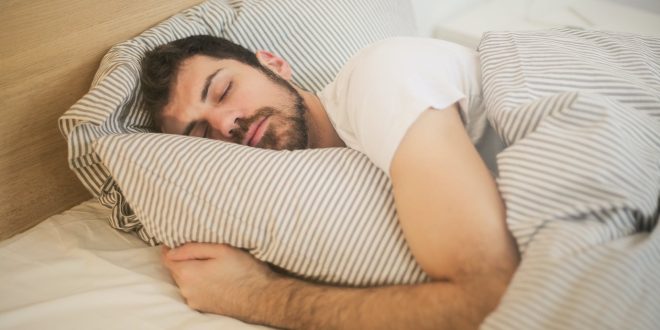In this fast-paced world, getting a good night’s sleep can go beyond being a physiological process and turn into a learning experience. Here are some methods, ranging from relaxation techniques to seeking professional help.
At times, falling asleep requires effort, and seeking techniques to achieve it is becoming increasingly common. The worries and daily stress levels often lead us to bed with a tense body and mind, knowing that we may have only a few hours of sleep before the next early morning.
How can you manage this? In this article, you will discover valuable tips and strategies to make bedtime the highlight of your day rather than just another task to survive. Don’t miss out on these insights.
Techniques for Falling Asleep Quickly
Sleep doesn’t start when we become unconscious on the mattress. Even though we already understand how REM and non-REM phases work, rest begins when the body starts to relax. In fact, it begins as the heart rate and breathing slow down, and the muscles relax. This allows the body to maintain homeostasis as it transitions from a state of wakefulness.
That’s why the process of falling asleep should begin before getting into bed. Let’s explore some very useful tips to ensure that sleep comes quickly and smoothly.
Train yourself in relaxation techniques.
Diaphragmatic breathing and Jacobson’s progressive muscle relaxation can be quite effective in achieving a state of relaxation before bedtime. To master these techniques, it is advisable to seek guidance from a psychology professional, especially if you suffer from anxiety or panic disorders.
Engage in physical exercise, but not right before bedtime.
A study in Sleep Medicine suggests that daily exercise contributes to better sleep quality, though it should not be done right before bedtime but rather about 3-4 hours earlier. The reason for this recommendation is that intense physiological activity can hinder the relaxation the body needs to promote sleep and rest.
Avoid consuming caffeine and other stimulating substances.
This study published in the Journal of Sleep Research warns that caffeine consumption in the afternoon or before bedtime is associated with poorer sleep quality, as it hinders a natural transition into the deeper sleep stages (REM and non-REM).
Try the 4-7-8 breathing technique.
This technique is one of the ways to learn how to perform proper diaphragmatic breathing. Here are the simplified steps:
- Place the tip of your tongue behind your upper front teeth, where the roof of the mouth begins.
- Inhale through your nose for 4 seconds.
- Hold your breath for 7 seconds.
- Exhale the air from your lungs over 8 seconds.
Embrace the routine, one of the most natural techniques for falling asleep quickly.
While we all enjoy excitement and breaking away from routine, maintaining consistency in daily rhythms and habits is the best way to train your biological clock.
Eating, working, resting, sleeping, and waking up at consistent times helps you become more attuned to the signals your body sends. In other words, you will naturally become sleepy at the same time, and if you respect this, you’ll fall asleep more quickly.
Regulate your naps.
While napping is indeed one of the best moments of the day and supports cognitive functions, they shouldn’t be overly long. Otherwise, they can become a factor in developing insomnia symptoms, as shown in this study from the Sleep journal. In general, short naps of about half an hour to an hour and a half are recommended, aligning with a natural sleep cycle.
Use visualization techniques.
Do you remember being told to count sheep to fall asleep? Well, it’s based on the intuitive understanding that visualizing relaxing images can lead to a decrease in physiological rhythms. This way, you’ll manage to fall asleep more quickly.
Get out of bed when you can’t fall asleep.
Associating your bed with a place where you relax and fall asleep is crucial. Therefore, if you’re having trouble relaxing, get out of bed and engage in a slow, routine activity, such as preparing your clothes for the next day, reading, taking a short stroll around the house, and so on. Do this until your arousal decreases, and then you can return to bed.
Unconsciously, you will begin to associate the sheets with the time to sleep. The key is to feel a little drowsy before getting back in bed.
Do not use the bed for anything other than sleeping.
Related to the previous point is the separation of spaces: if you eat, play, sleep, or work in bed, you associate it with all the emotional states related to those activities. Furthermore, if you telecommute and have the option, avoid working in your bedroom and choose another location.
Relaxation routines.
Sipping a soothing herbal tea, listening to soft music, doing some stretches, taking a warm shower – all of these can be great ideas to achieve that pre-sleep relaxation that helps you fall asleep faster. Try them out and choose the one that works best for you, making it a habit.
Acupressure.
The acupressure technique originates from traditional Chinese medicine and involves applying pressure to specific points on the body to achieve specific effects. A review study published in Cochrane has found that this practice may improve sleep latency and duration.
However, it’s a technique that should be performed by someone trained in it. On the other hand, the same study cautions that further research is needed on the subject, so its effectiveness, like the other strategies, remains subject to individual circumstances.
Consult a specialist.
The last of the techniques for falling asleep quickly isn’t a practice itself but rather a decision for the sake of your health. Taking too long to fall asleep could be the result of an underlying disorder, such as insomnia or generalized anxiety. Therefore, if these recommendations don’t work for you, consider seeking the advice of your doctor or psychologist to identify the causes of your insomnia.”
Everyone has their own pace.
It’s essential to conclude this discussion with a warning that these techniques for falling asleep quickly revolve around habits to maintain good sleep hygiene. They are accessible to everyone, but that doesn’t mean they work equally well for everyone in the general population. Until you find the one that works best for you, you’ll need some practice time, so be patient.
Thank you for reading!
Source: lamenteesmaravillosa.com
 MENTPSYCH Meet Your Self
MENTPSYCH Meet Your Self




